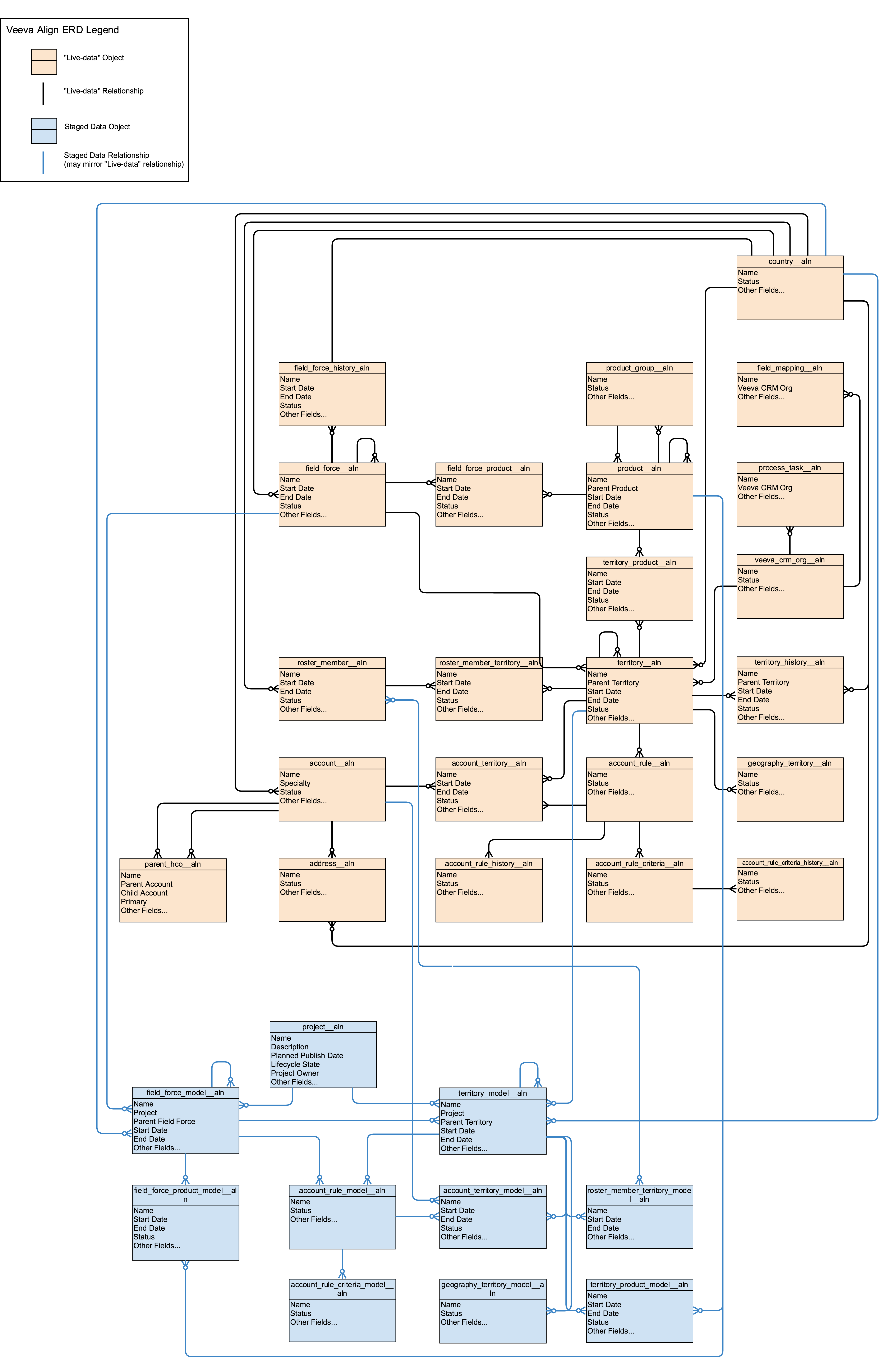Territory Modeling Overview
Align's Territory Modeling feature allows users to model Territories and assignments without impacting production data. Users can create copies of existing production Territories and Field Forces in modeling or create entirely new Territory and Field Force models.
Through these models, users can try out a variety of scenarios, assignment rules and criteria, or product and geography assignments to determine which one best suits their goals.
For example, an organization is launching a new product in the next quarter can model their Territories, assignment rules, Field Forces, etc. in Territory Modeling to determine which accounts to target with that product. Territory Modeling allows users to conduct this investigation without affecting current production data or introducing an unapproved product to the sales team.
Furthermore, users can stage changes for a later date through Territory Modeling without affecting current behavior. This could be as basic as renaming a Territory or as extensive as rewriting a Territory's entire Account rule logic. Users can prepare these changes ahead of time and have them become effective on the desired date at the push of a button.
Territory Modeling rests on the following objects:
|
Label |
Name |
Description |
|---|---|---|
| Project | aln_project__v | A collection of models. Projects determine which models are part of the same effort and which models are published at the same time. |
| Model Territory | aln_territory_model__v | Holds the model Territory data, which may be implemented into aln_territory__v |
| Model Field | Force aln_field_force_model__v | Contains the model's Field Force data, which may be implemented into aln_field_force__v |
| Model Account Territory | aln_account_territory_model__v | Stores the model Account assignments to a Territory, which may be implemented into aln_territory__v. Accounts listed here are taken from the production account__v table. |
|
Model Geography Territory |
aln_geography_territory_model__v |
Holds the model Geography assignments to a Territory, which may be implemented into aln_geography_territory__v |
| Model Account Exclusion | aln_account_exclusion_model__v | Contains all exclusions applying to aln_account_territory_model__v assignments. These can be global exclusions or exclusions specific to certain Field Force models or Territory models. |
| Model Account Rule | aln_account_rule_model__v | Stores the model Account Rule assigned to a Territory or Field Force, which may be implemented into aln_account_rule__v |
|
Model Account Rule Criteria |
aln_account_rule_criteria_model__v |
Contains the model Account Rule Criteria data assigned to an Account Rule, which may be implemented into aln_account_rule_criteria__v. |
| Model Roster Member | Territory aln_roster_member_territory_model__v | Stores the model Roster Member assignments to a Territory, which may be implemented into aln_roster_member_territory__v. Roster Members are taken from the production aln_roster_member__v table. |
|
Model Product Territory |
product_aln_territory_model__v |
Holds the model Product assignments to a Territory, which may be implemented into product_aln_territory__v. Products here are taken from the production product__v table. |
| Model Product Field Force | product_aln_field_force_model__v | Contains the Product assignments to a model Field Force, which may be implemented into product_aln_field_force__v. Products here are taken from the production product__v table. |
Modeling objects are not affected by security rules for production objects. Users must set up security rules specifically for modeling objects.
Who can use this feature?
- Browser Users
- Users require an Align License
- Business Admin Users
Territory Modeling Entity Relationship Diagram
The following diagram illustrates the relationships between Territory Monitoring entities.

Custom Field Support in Territory Modeling
Align supports the ability to include custom fields in territory modeling. This enables custom fields to dynamically map to corresponding fields on modeling objects.
For example, the custom_field__c field on the aln_territory__v object automatically maps to the custom_field__c field on the aln_territory_model__v object.
When a project imports from production, the value from the custom_field__c field on the aln_territory__v object is stamped onto the custom_field__c field on the aln_territory_model__v object.
When a project publishes from modeling to production, the value from the custom_field__c field on the aln_territory_model__v object is stamped onto the custom_field__c field on the aln_territory__v object.
This feature only applies to fields ending with the __c suffix.
Use
Users must create custom fields on both production and modeling objects for mapping to occur.
Fields supported by dynamic mapping must fulfill the following requirements:
- Fields must exist in both the object and the corresponding modeling object
- Fields must have identical names, labels, data types, and lengths (where applicable)
- Picklists must have identical values in identical orders
Object Reference, Lookup, and Parent-Child field types are not supported.
When publishing or importing, custom fields stamp with values from the appropriate mapped custom field.
Aggregate Territory Fields for Reporting
Stamped fields enable users to report metrics at the territory level. Aggregate values of the following aln_territory__v object fields are stamped at each level in the hierarchy:
- total_hcos__v – Represents the count of HCOs in the Territory
- total_hcps__v – Represents the count of HCPs in the Territory
- total_targets__v – Represents the count of targets in the territory for the current or next cycle
The stamped fields update when any of the following events occur:
- Running an Assignment Preview
- Importing from Vault CRM
- Data loading any record impacting the aggregate calculation
- Any changes made in the user interface

